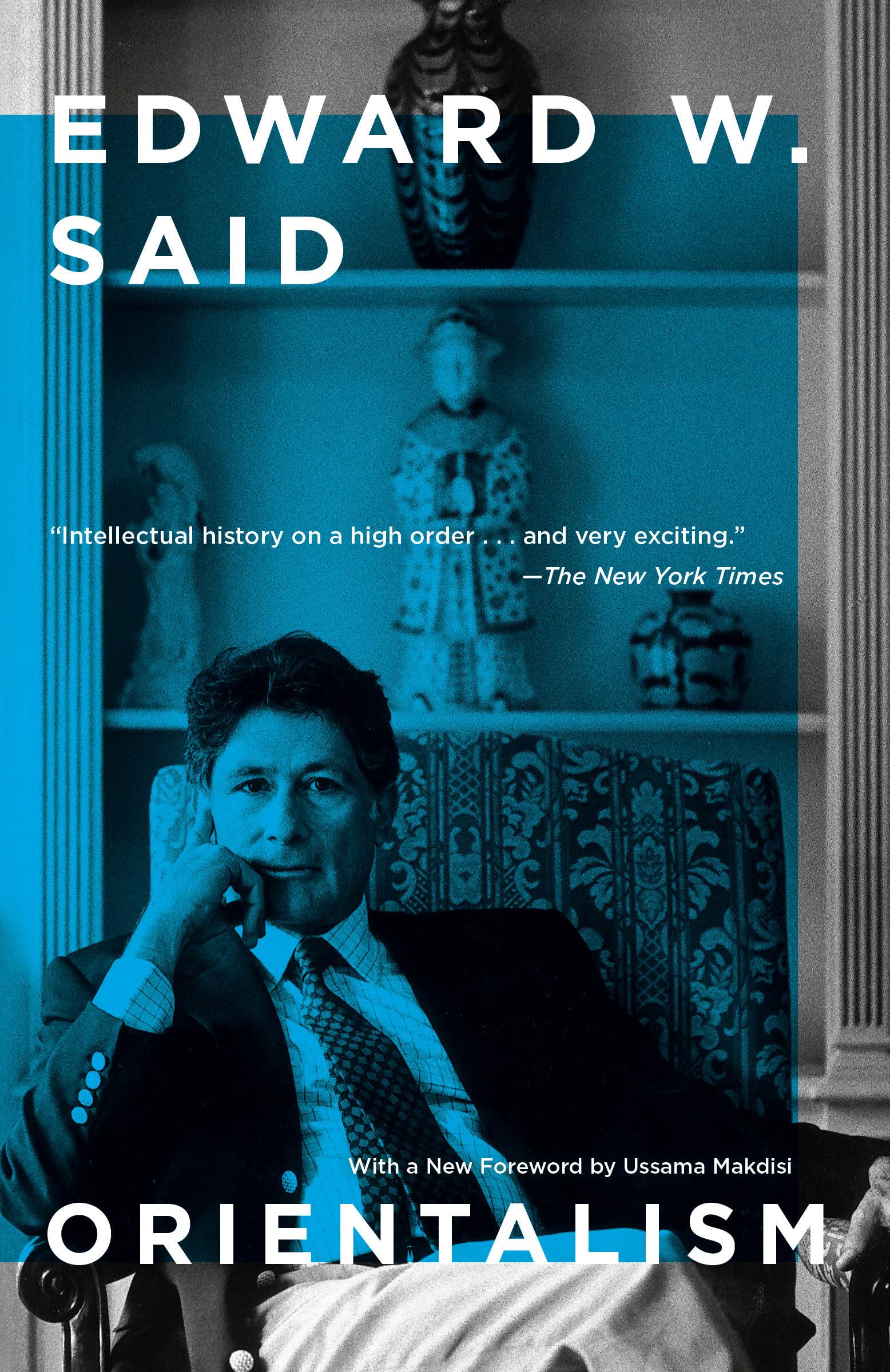Features
Jewish nonprofits are struggling. How should donors try to rescue them?

By BEN SALES NEW YORK (JTA) — In the weeks after it became clear that the coronavirus pandemic would spark a lasting economic crisis, the Jewish world’s leading funder group put together a memo with some back-of-the-envelope projections for how much Jewish nonprofits stood to lose.
The tally: at least $650 million, according to the internal document from the Jewish Federations of North America, which was based on estimates from several American Jewish umbrella organizations, such as the Foundation for Jewish Camp and the JCC Association of North America. The document was produced in March and obtained by the Jewish Telegraphic Agency.
The document says Jewish camps, schools, community centers and other groups like college Hillels will need that much or more to make it through the pandemic, which has already caused widespread layoffs and furloughs at Jewish community centers across the United States.
On Monday, a coalition of large Jewish philanthropic foundations pledged $80 million to shore up struggling Jewish organizations. But now, with it becoming increasingly clear that the world will not snap back to its former shape anytime soon, that number appears to be a fraction of what will be needed. Doron Krakow, CEO of the JCC Association of North America, told JTA earlier this month that the need would exceed $800 million if camps have to close for the summer and a recession drags into a second year.
The sudden financial blow is reanimating a longstanding debate about the best way to support America’s robust infrastructure of Jewish nonprofits. Should collective, communal fundraising bodies like Jewish federations have responsibility for disbursing philanthropy across the Jewish world? Or should the wide array of private Jewish family foundations each give separately to their causes?
Proponents of the network of Jewish federations, which act as collective funding bodies for local Jewish communities across the country, have suggested a single massive pool of coronavirus philanthropic assistance, to be managed centrally. No overarching plan has been put forward yet, but the Jewish Telegraphic Agency has learned that several leading funders are working to form a fund that would provide loans to Jewish organizations on the brink of going broke.
Among them is Krakow, who has called for private Jewish foundations and Jewish federations, which act as collective charities for Jewish communities across the country, to create a loan fund of $1 billion.
“There’s a need to know with confidence that we can keep one eye on the horizon and know that there’s a day after,” he said.
But some in the world of Jewish philanthropy are already raising questions about whether a centrally administered megafund is the best strategy to shepherd geographically and programmatically diverse organizations through the crisis.
“A ‘Billion Dollar Fund,’ a ‘Jewish New Deal’ [or] a ‘COVID czar’ are fine and well-intentioned ideas that look good on paper and seem simple and straightforward, but they are anything but,” Andres Spokoiny, CEO of the Jewish Funders Network, which convenes Jewish donors and foundations, wrote in a recent essay in the publication eJewish Philanthropy.
“As leaders it’s our responsibility to accept reality and focus on practical, smaller-scale, sector-specific solutions that can work,” Spokoiny wrote. “The aggregate of all those will be surely larger than any central fund and will produce a richer and more vibrant result.”
The $80 million fund, announced Monday, appears to attempt a third way. It’s a coalition between the Jewish Federations of North America and eight large Jewish philanthropic foundations. Called the Jewish Community Response and Impact Fund, it will prioritize organizations that focus on education, leadership and engagement, though a press release did not provide further detail on those fields.
The fund will provide short-term loans to organizations to meet payroll and maintain operations in the next three to six months, and will also award grants that do not have to be repaid. Participating foundations include the Jim Joseph Foundation, Maimonides Fund, Charles and Lynn Schusterman Family Foundation and others.
“We have also seen firsthand the acute challenges Jewish organizations across the country are facing,” read a statement from the funders. “While this fund alone cannot address all of those challenges, we believe that investing together in these vital pillars of Jewish life will help ensure a stronger future for American Jewry in the months and years to come,”
Beyond that fund, experts in American Jewish philanthropy say that large individual donors and family foundations are likely to eschew putting their money in a giant pool. While federations used to dominate the Jewish giving scene, they and their ethos of collective giving have ceded more ground to private foundations, as large donors have become more involved in the causes they fund and more particular about how their money is spent.
“If we’ve seen any trend in philanthropy over the course of the last number of decades, it’s to targeted giving,” said Jack Wertheimer, a professor of American Jewish history at the Jewish Theological Seminary. “Donors are leery of giving large amounts of their philanthropy to a pot that will be divided up, not according to their own wishes but according to the directives of some body that would make the decision. Federations obviously have suffered from this.”
But there’s still interplay between large donors and federations, said Hanna Shaul Bar Nissim, a visiting scholar at Brandeis University who focuses on American Jewish philanthropy. Many Jewish family foundations give to their local Jewish federations and, in turn, sit on their boards or have influence over where the federation money goes.
“The golden rule of, the size of your donation impacts the size of your involvement, is very relevant to the world of Jewish federations,” said Bar Nissim, who is also deputy director of the Ruderman Family Foundation. “The more you give, the more you can have a say and become involved.”
No matter how the debate is settled — or whether it is at all — it’s clear that funders must move quickly if they are to blunt the effects of the pandemic, which has rendered at least 20 million Americans jobless in just four weeks.
Other Jewish philanthropies have also started doling out funds. New York’s UJA-Federation has announced $43 million in grants to social service organizations, JCCs and individuals in need.
And the Harold Grinspoon Foundation, which usually gives approximately $3 million annually to Jewish camps, has announced an additional $10 million in matching grants to help camps survive whatever financial damage this coming summer may bring.
The foundation’s leadership understands that $10 million is not nearly enough to fill camps’ anticipated needs — that would take about $150 million, the foundation estimates. Still, Sarah Eisinger, who heads the foundation’s camp initiative, said she hoped the $10 million dollars would set an example and give the camps a measure of hope.
“It’s only one intervention,” she said. “It’s only one slice of a much larger pie. But the early impact of that money and the psychological lift of a shot in the arm will fuel a sense of optimism and a possibility to raise resources.”
The foundation moved quickly in part because its president, Winnie Grinspoon, realized that hewing to longstanding giving practices, or waiting for them to be renegotiated, would deepen the financial devastation that is already unfolding.
“This is an unprecedented situation, as we all know, and the rules and restrictions we might operate under at a normal time go out the window,” Grinspoon said.
She added, “This is the moment to give boldly, to go beyond our normal giving structure and limitations for those who are able to reach deep into their pockets, so we don’t look back with regret.”
Features
CAD Performance in 2025: Key Factors Behind Its Recovery

The CAD is clawing back lost ground. Discover what pushed the loonie down in 2024, what’s lifting it in 2025, and why its future still hangs in the balance.
2024 was a strange year for the loonie. If you are an active currency trader, a quick look at a CAD/USD price chart would have you nodding in agreement. Yes, the year started off strong, but as the months rolled by, it was obvious that something was wrong, especially as we neared the end of Q3. The reason for the downtrend was clear. Most people agreed that it was the tariff threats from Washington, rate cuts at home, and a volatile global economy that were being reflected in the currency markets. And for a while, the CAD was stuck in that losing streak, with some experts even suggesting that there was still more to come.
As the new year rolled around, it didn’t seem like anything had changed. But by mid-2025, quiet shifts had turned into a noticeable recovery, with the loonie gaining back significant ground against the greenback. So, in this piece, we’ll break down what really dragged the Canadian dollar lower in 2024, what’s fueling its recovery this year, and whether this rebound is going to hold steady.
Understanding What Happened in 2024
At the start of the year (2024), one U.S. dollar traded for about 1.35 CAD, which translates to one Canadian dollar being valued at roughly 74 cents U.S. It wasn’t anything special at the time, especially after the levels of inflation and volatility of 2023. Still, economists noted that these were the few key factors that kept the loonie afloat early in the year:
- The price of oil made a comeback. Crude prices firmed up early in the year, supporting Canada’s export earnings and adding a tailwind to the currency.
- Employment figures were solid. Job growth held up, and steady wage gains helped offset the pressure of higher borrowing costs.
- The BoC held a steady interest rate. After an aggressive round of rate hikes in 2023, policymakers looked ready to pause and let the economy cool gradually.
All of these factors were thought to have helped build confidence in the Canadian economy and by mid-2024, the loonie had edged up toward 76-77 cents U.S.
Late-Year Turbulence
Not a lot of people saw it, but as Q2 2024 unfolded, the CAD started to look unattractive to currency market investors. How? Well, it started when the Bank of Canada (BoC) started to signal its intention to cut interest rates. It gave its clearest sign to this on April 10, 2024 when the bank highlighted that inflation was slowing down and it was leaving the door open for rate cuts. This announcement changed market expectations almost overnight.
Eventually, the first cut came on June 5, 2024. The BoC lowered its benchmark rate by 25 basis points from 5% to 4.75%, becoming the first major G7 central bank to start easing.
From there, the pace picked up with rates being reduced four more times. The market’s reactions to these cuts were immediate. And any currency trader with a reliable forex trading app saw each one unfold live. The CAD began to lose altitude as the yield gap with the U.S. widened. With lower returns on Canadian assets, investors favored the greenback. Adding to the pressure, the Trump campaign’s 25% tariff threat in September ignited the fears of a trade war. Which led to traders quickly pricing in potential hits to exports and investment, sending sentiment lower.

The 2025 Comeback
The CAD started 2025 trading at around 67 cents U.S., with some days even seeing it flirt with the 66-cent mark. So, it was a common assumption in the currency traders’ community that 2024 might repeat itself. But something was different this time. Every day, the loonie was quietly clawing back much of the ground it lost during the previous year’s slump.
So, what was different this time? Well, experts believe the panic that gripped both retail and institutional traders through late 2024 began to fade. As positive economic data started to filter in, confidence slowly returned alongside a few key drivers. By midyear, analysts were already talking about a turnaround rather than just a recovery attempt. The CAD was trading in the 72-73-cent U.S. range, up solidly from its January lows, and here’s its current rate.
Major Factors Behind the CAD’s Recovery
So, what helped the CAD? Well, there were a few clear factors that came together to turn sentiment around and put the loonie back on steadier footing.
- U.S. Dollar Weakness
A softer U.S. dollar was one of the clearest tailwinds for the CAD in 2025. The weakening of the USD started occurring when investors started to pull back from U.S. assets as political tension, fiscal worries, and softer economic data piled up.
What drove it?
- Trade and political uncertainty: Tariff moves and Washington infighting rattled investor confidence.
- Fiscal strain: Deficit concerns eroded trust in U.S. financial stability.
- Fed policy shifts: With the Federal Reserve showing interest in cutting rates (and actually doing so on September 16), the yield advantage that once favored the dollar began to fade.
As investors reduced exposure to U.S. assets, capital rotated into other major currencies. The CAD, being liquid and commodity-linked, was one of the key beneficiaries, strengthening almost by default as the greenback lost ground.
- Diverging Monetary Policy
Monetary policy divergence became another major driver. The Bank of Canada held its policy rate steady near 2.75% through Q2 2025 before cutting in September, signaling confidence that inflation was cooling without stalling growth. Meanwhile, the U.S. Federal Reserve began easing monetary policy with its first rate cut in September 2025, responding to slowing growth and softer inflation. This divergence in pace and tone helped support the Canadian dollar’s rebound.
This narrowing interest rate gap mattered. And with Canada offering relatively higher yields, foreign investors found the loonie more attractive, especially compared to the softening U.S. dollar. For traders, the CAD started to look like a better carry trade than it had in over a year.
- Easing Tariff Fears
Another major psychological lift came from the fading of tariff risks. In the first half of 2025, Trump’s proposed 25% tariffs on Canadian goods lost traction as political attention shifted elsewhere. While some concerns still lingered, the immediate threat of a trade shock began to ease. Cross-border trade flows regained a bit of momentum, and markets started to price in a smoother path for Canadian exports. That renewed confidence played a key role in supporting the loonie’s recovery.
Can the Loonie Hold Its Ground?
As 2025 moves forward, the consensus among analysts is cautious but constructive. Most expect the Canadian dollar to trade in the 1.33-1.36 range against the U.S. dollar, a level that points to stability. The worst of 2024’s volatility seems to be behind it, but the loonie’s next moves will still depend on how the global story unfolds.

A Currency That Refused to Stay Down
The past two years have been anything but smooth for the CAD, but this move has proven one thing: resilience runs deep. After weathering policy shifts, tariff scares, and market pessimism, the loonie has managed to rebuild its footing in 2025. Its recovery hasn’t been dramatic. It was grounded in solid fundamentals and steady confidence. For traders, that’s a reminder that sentiment can turn just as fast as it fades.
Features
Statistical Volatility Models in Slot Mechanics: Extended Expert Analysis Informed by Pistolo Casino
Analytical reviews of slot volatility often reference ecosystems similar to those found at Pistolo casino. Within the gambling research community, volatility is understood not as a marketing attribute, but as a technical framework that shapes how digital slot systems distribute outcomes over time. Expanding on earlier overviews, this extended analysis examines the deeper mathematical logic behind volatility classes, as well as their implications for long-term behavioural modelling.
Volatility as a Mathematical Architecture
Slot volatility is commonly divided into high-, medium-, and low-risk models, yet this simplified categorisation hides the structural complexity underneath. Developers configure several layers of probability weighting, which include:
- Event Density Layers – Each slot contains multiple weighted segments representing minor, medium, and rare outcomes.
- Return Frequency Curves – These curves dictate how the distribution of payouts drifts around the long-term equilibrium.
- Reel Weighting Matrices – Symbol appearance probability is shaped not only by frequency but also by conditional dependencies within each reel strip.
Research drawing on examples parallel to Pistolo casino shows that modern slots increasingly use modular probability blocks, making outcome variance more flexible and more precisely adjustable during development.
Behavioural Interpretation of Volatility Signals
From a player analytics perspective, volatility modelling helps identify how different user groups respond to varying risk structures. High-volatility mechanics frequently attract users who seek extended tension cycles and the possibility of occasional strong outcomes, while low-volatility systems are associated with steady-state gameplay and longer average session times.
Analysts also examine “volatility fatigue,” a concept describing the moment when prolonged dry cycles reduce engagement. By tracking these patterns, researchers can map how changes in event spacing affect decision-making, bet sizing, and persistence.
Simulation Methodology for Evaluating Volatility Accuracy
Technical audits rely heavily on large-scale simulations—sometimes exceeding fifty million iterations — to verify that the modelled volatility aligns with theoretical expectations. Key indicators include:
- Hit rate stability across long sequences
- Distribution symmetry, ensuring outcomes do not drift into accidental bias
- Deviation corridors, which define acceptable ranges for short-term anomalies
- Return-to-player convergence, showing whether the model equilibrates over time
When discrepancies appear, developers may adjust symbol weighting, probability intervals, or feature-trigger frequency until the system reaches internal balance consistent with regulatory and mathematical demands.
Volatility’s Role in Market Diversity
Volatility modelling helps explain the substantial variety between slot titles. Instead of relying solely on themes or graphics, modern game design differentiates titles by emotional rhythm and progression speed. This technical approach has led to more deliberate pacing structures where reward cycles, anticipation building, and event clustering are calibrated through mathematical systems rather than subjective intuition.
Conclusion
Volatility remains one of the most precise and data-driven components of slot design. Its study provides insight into outcome diversity, behavioural responses, and long-term predictability. Research frameworks referencing platforms comparable to Pistolo Casino highlight how volatility models shape modern gambling environments through measurable probability engineering and large-scale simulation.
Features
Bias in America’s Colleges Produced Modern Anti-Zionism

By HENRY SREBRNIK Jon A. Shields, Yuval Avnur, and Stephanie Muravchik, professors at the Claremont Colleges in California, have just completed a study, “Closed Classrooms? An Analysis of College Syllabi on Contentious Issues,” published July 10, 2025, that draws on a database of millions of college syllabi to explore how professors teach three of the most contentious topics: racial bias in the criminal justice system, the Israel-Palestine conflict, and the ethics of abortion.
They used a unique database of college syllabi collected by the “Open Syllabus Project” (OSP). The OSP has amassed millions of syllabi from around the world primarily by scraping them from university websites. They date as far back as 2008, though a majority are from the last ten years. Most of the data comes from universities in the United States, Britain, Canada, and Australia.
“Since all these issues sharply divide scholars, we wanted to know whether students were expected to read a wide or narrow range of perspectives on them. We wondered how well professors are introducing students to the moral and political controversies that divide intellectuals and roil our democracy. Not well, as it turns out.”
In the summary of their findings, “Professors Need to Diversify What They Teach,” they report that they found a total lack of ideological diversity. “Across each issue we found that the academic norm is to shield students from some of our most important disagreements.”
Teaching of Israel and Palestine is, perhaps no surprise, totally lopsided, and we’ve seen the consequences since October 7, 2023. Staunchly anti-Zionist texts — those that question the moral legitimacy of the Israeli state — are commonly assigned. Rashid Khalidi, the retired professor of Modern Arab Studies at Columbia, is the most popular author on this topic in the database. A Palestinian American and adviser to the Palestine Liberation Organization delegation in the 1990s, Khalidi places the blame on Israel for failing to resolve the conflict and sees the country’s existence as a consequence of settler-colonialism.
The problem is not the teaching of Khalidi itself, as some on the American right might insist. To the contrary, it is important for students to encounter voices like Khalidi’s. The problem is who he is usually taught with. Generally, Khalidi is taught with other critics of Israel, such as Charles D. Smith, Ilan Pappé, and James Gelvin.
Not only is Khalidi’s work rarely assigned alongside prominent critics, those critics seem to hardly get taught at all. They include Israel: A Concise History of a Nation Reborn by Daniel Gordis, a professor at Shalem College in Israel. Gordis’s book appears only 22 times in the syllabus database. Another example is the work of Efraim Karsh, a prominent historian. His widely cited classic, Fabricating Israeli History, appears just 24 times.
For most students, though, any exposure to the conflict begins and ends with Edward Said’s Orientalism, first published in 1978. Said is the intellectual godfather of so many of today’s scholars of the Middle East, thanks in no small part to this classic book. Said was a Palestinian-American academic, literary critic, and political activist from a prominent Christian family. Educated at Princeton and Harvard Universities, two of America’s most distinguished centres of higher learning, he taught at Columbia University, another Ivy League institution, until his death in 2003.
Said was no crude antisemite. His writings were aimed at academics and intellectuals and he has, in my opinion, done more damage to the Jewish people than anyone else after 1945. Said claimed to be the first scholar to “culturally and politically” identify “wholeheartedly with the Arabs.” But he was also a political activist for the Palestinian movement opposing the existence of Israel.
Said warned PLO leader Yasir Arafat that if the conflict remained local, they’d lose. Join “the universal political struggle against colonialism and imperialism,” with the Palestinians as freedom fighters paralleling “Vietnam, Algeria, Cuba, and black Africa,” he advised.
(In this he was not the first, though. Fayez Sayegh, a Syrian intellectual who departed for the United States and completed his Ph.D. at Georgetown University in 1949, preceded him. Also an academic, his 1965 monograph Zionist Colonialism in Palestine stands as the first intellectual articulation of Zionism as a settler colonial enterprise, arguing that the analytical frameworks applied to Vietnam and Algeria apply equally to Palestine. The treatise situated Zionism within European colonialism while presenting it as uniquely pernicious.)
Israel’s post–Six-Day War territorial expansion helped Said frame Israel as “an occupying power” in a 1979 manifesto titled The Question of Palestine. Alleging racial discrimination as the key motive was a means of transforming the “Zionist settler in Palestine” into an analogue of “white settlers in Africa.” That charge gained traction in a post-Sixties universe of civil rights, anti-imperialism, anti-colonialism, and Western self-abnegation. The work sought to turn the tables on the prevailing American understanding of Israel: It is not, in fact, an outpost of liberal democracy or refuge from antisemitism, but an instrument of white supremacy.
Orientalism popularized a framework through which today’s advocates on behalf of Palestinians understand their struggle against the state of Israel and the West generally. Said casts the Western world as the villains of history and peoples of the East as its noble victims.
The essence of the book, Said concluded, is the “ineradicable distinction between Western superiority and Oriental inferiority.” It falsely affirms “an absolute and systematic difference between the West, which is rational, developed, humane, superior, and the Orient, which is aberrant, undeveloped, inferior.”
So it was impossible to take Zionism seriously as one among the myriad nationalist movements that emerged in the nineteenth century, much less to see Israel itself as a land of refugees or the ancestral homeland of Jews. And, indeed, Said’s Orientalism singles out Israel for special rebuke, suggesting that the state could be justified only if one accepted the xenophobic ideology at the core of Western civilization. Israel’s defenders, particularly those who lament the lack of democracy in the Middle East and fault Arabs for their militancy, represent the “culmination of Orientalism.”
Said is widely acknowledged as the godfather of the emerging field of postcolonial studies, and his views have profoundly shaped the study of the Middle East. Said also inspired – and in some cases directly mentored – a generation of anti-Zionist U.S. scholars whose dominance in the academic study of the area is unquestionable today.
The political left that emerged trained itself to read every conflict as the aftershock of colonialism. The ideological narrative of oppression and resistance allowed even the jihadist to become a post-colonial rebel.
It’s hard to overstate the academic influence of Orientalism. The authors note that “As of this writing, it has been cited nearly 90 thousand times. It is also the 16th most assigned text in the OSP database, appearing in nearly 16 thousand courses.” Orientalism is among the most popular books assigned in the United States, showing up in nearly 4,000 courses in the syllabus database. Said’s work appears in 6,732 courses in U.S. colleges and universities.
But although it was a major source of controversy, both then and now, it is rarely assigned with any of the critics Said sparred with, like Bernard Lewis, Ian Buruma, or Samuel Huntington. Instead, it’s most often taught with books by fellow luminaries of the postmodern left, such as Frantz Fanon and Judith Butler.
All these ideas are now embedded into diversity, equity, and inclusion identity politics, and “humanitarian” outrage over supposed Israeli “settler-colonialism,” “genocide,” and “apartheid.”
The ground for the massive pro-Hamas college and university encampments, and attacks on Jewish students, was prepared decades ago. The long march of progressives through American institutions over the past decades has taken its toll on society.
Henry Srebrnik is a professor of political science at the University of Prince Edward Island.


